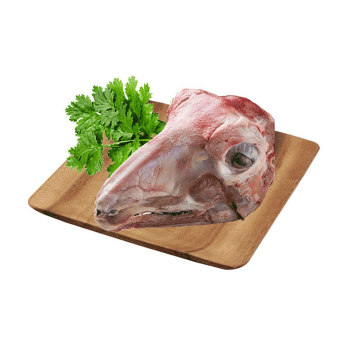In the heart of Chennai, where the aroma of spices fills the air and the sizzle of dosas is a daily symphony, we find Ramesh, a passionate foodie and home cook. Ramesh's kitchen is a melting pot of flavors where tradition meets innovation. However, like many modern Indians, he faces a dilemma how to maintain the authenticity of traditional dishes while ensuring they meet the nutritional needs of his family.
Ramesh recalls his grandmother's kitchen, where every Sunday was a celebration of flavors. Among the star dishes was "Moolai Varuval," a spicy stir-fried mutton brain dish. It was not just a meal but a ritual that brought the family together. Fast forward to today, Ramesh wants to recreate these flavors for his children but worries about the nutritional content and sourcing quality ingredients in a fast-paced world.
Herein lies a distinct problem faced by Ramesh and many like him the challenge of balancing traditional culinary practices with modern health consciousness. Mutton brain, rich in essential nutrients like omega-3 fatty acids, high-quality protein, and vitamins, offers a solution to this problem. It is a powerhouse of nutrition that can seamlessly fit into a balanced diet, making it an ideal choice for families aiming to combine taste with health.
One day, during a casual conversation over chai, Ramesh's friend Priya mentioned how she had struggled with the same issue. As a working mother, Priya wanted her children to enjoy traditional flavors without compromising on nutrition. She shared how mutton brain became her secret weapon in the kitchen. The nutrient-dense ingredient allowed her to prepare dishes that not only resonated with her cultural roots but also supported her family's dietary needs. Inspired by Priya's success, Ramesh decided to incorporate mutton brain into his culinary repertoire.
The next weekend, Ramesh set out to recreate his grandmother's Moolai Varuval. Armed with carefully sourced mutton brain, he marinated it with a blend of spices — turmeric, red chili powder, and freshly ground pepper. The sizzle of the brain in the hot pan, the blend of aromas, and the vibrant colors were a testament to the rich culinary heritage he was eager to pass on to his children.
As he served the dish to his family, Ramesh watched with anticipation. His children, initially skeptical, took their first bites. Their eyes lit up with delight, a reaction that mirrored his own childhood memories. The dish was a hit, not just for its taste but also for the nutritional benefits it promised.
The use of mutton brain in Indian cuisine is not just a nod to tradition; it is a bridge connecting the past with the present. It empowers home cooks like Ramesh and Priya to offer their families meals that are steeped in cultural heritage while catering to modern nutritional needs. It helps solve the practical problem of sourcing nutritious ingredients that are compliant with traditional recipes, ensuring that the essence of Indian culinary art is preserved.
For those in urban settings, where time is a luxury and health is a priority, the mutton brain is an unsung hero. It is a testament to the fact that one need not compromise on flavor for nutrition. By choosing quality ingredients and staying true to traditional recipes, Indian food enthusiasts can enjoy the best of both worlds.
In a rapidly changing world, where culinary practices evolve as quickly as technology, the story of Ramesh and his Moolai Varuval serves as a reminder. It reminds us that the key to preserving our culinary legacy lies in the choices we make today. By embracing ingredients like mutton brain, we can ensure that the rich tapestry of Indian cuisine continues to thrive, nourishing our bodies and souls.
In the end, for Ramesh and countless others, mutton brain is more than just an ingredient. It is a solution to a modern problem, a connection to the past, and a promise of a flavorful future.
Visit Vyaparify Site:
https://id.vyaparify.com/subikshan-sekarLocation:
https://maps.app.goo.gl/9h6ubGHJG8JKQ4Kp9 
